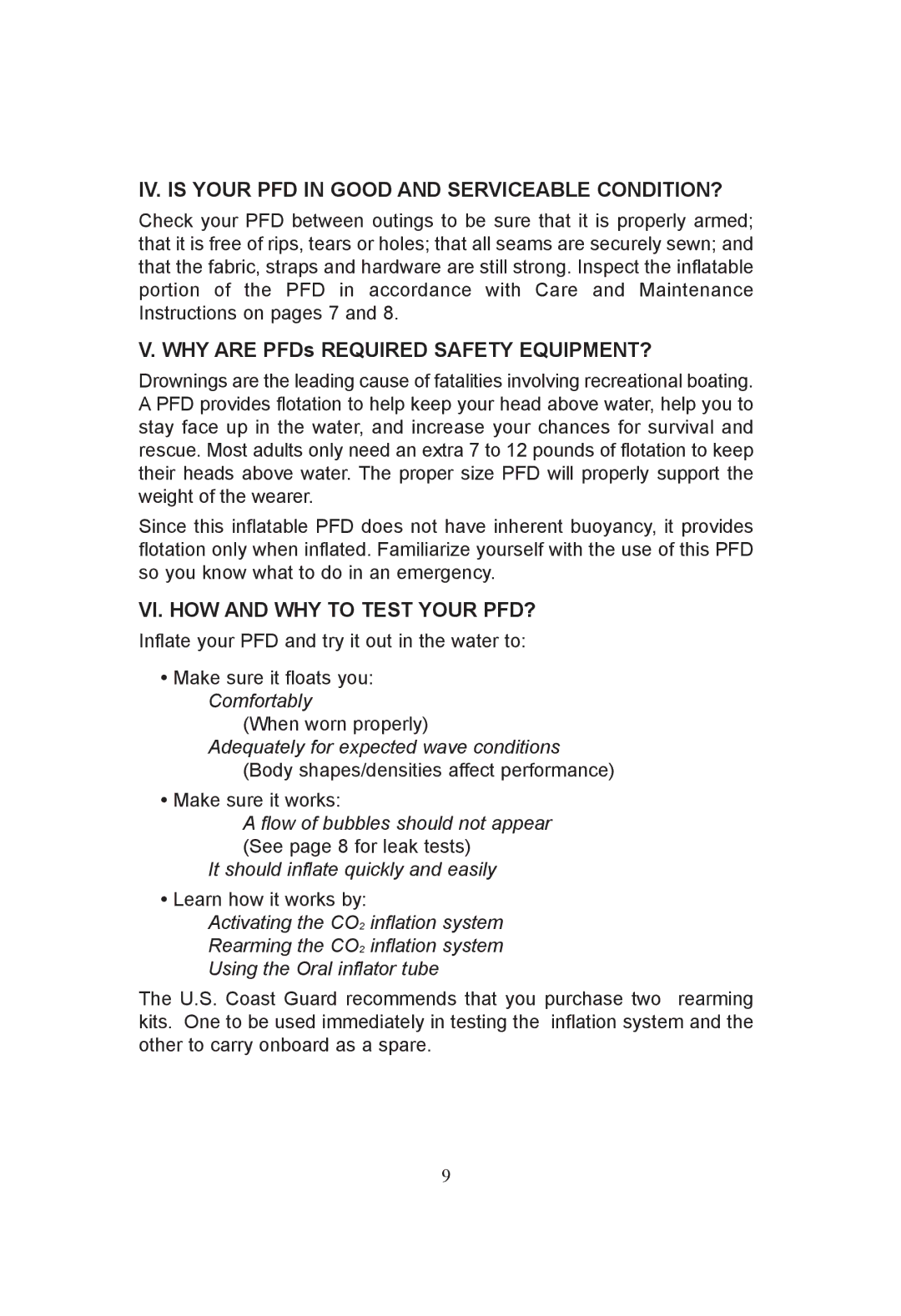IV. IS YOUR PFD IN GOOD AND SERVICEABLE CONDITION?
Check your PFD between outings to be sure that it is properly armed; that it is free of rips, tears or holes; that all seams are securely sewn; and that the fabric, straps and hardware are still strong. Inspect the inflatable portion of the PFD in accordance with Care and Maintenance Instructions on pages 7 and 8.
V. WHY ARE PFDs REQUIRED SAFETY EQUIPMENT?
Drownings are the leading cause of fatalities involving recreational boating. A PFD provides flotation to help keep your head above water, help you to stay face up in the water, and increase your chances for survival and rescue. Most adults only need an extra 7 to 12 pounds of flotation to keep their heads above water. The proper size PFD will properly support the weight of the wearer.
Since this inflatable PFD does not have inherent buoyancy, it provides flotation only when inflated. Familiarize yourself with the use of this PFD so you know what to do in an emergency.
VI. HOW AND WHY TO TEST YOUR PFD?
Inflate your PFD and try it out in the water to:
•Make sure it floats you: Comfortably
(When worn properly)
Adequately for expected wave conditions (Body shapes/densities affect performance)
•Make sure it works:
A flow of bubbles should not appear (See page 8 for leak tests)
It should inflate quickly and easily
•Learn how it works by:
Activating the CO2 inflation system
Rearming the CO2 inflation system
Using the Oral inflator tube
The U.S. Coast Guard recommends that you purchase two rearming kits. One to be used immediately in testing the inflation system and the other to carry onboard as a spare.
9
